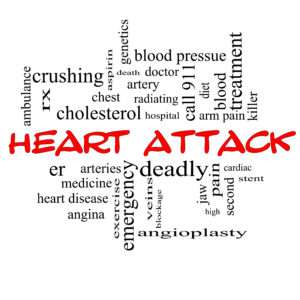Heart disease is the leading cause of death for people of most ethnicities in the United States, including African Americans, Hispanics, and whites. For American Indians or Alaska Natives and Asians or Pacific Islanders, heart disease is second only to cancer. Below are the percentages of all deaths caused by heart disease in 2008, listed by ethnicity1. Jay Harold wrote this post, “5 Facts on Women and Heart Disease: Plus Risk Factors,” to provide information to deal with a disease that killed 289,758 women in 2013.
| Race of Ethnic Group | % of Deaths |
|---|---|
| American Indians or Alaska Natives | 18.4 |
| Asians or Pacific Islanders | 22.2 |
| Non-Hispanic Blacks | 23.8 |
| Non-Hispanic Whites | 23.8 |
| All | 23.5 |
Facts on Women and Heart Disease2
- Heart disease is the leading cause of death for women in the United States, killing 289,758 women in 2013—that’s about 1 in every 4 female deaths.
- Although heart disease is sometimes thought of as a “man’s disease,” around the same number of women and men, die each year of heart disease in the United States. Despite increases in awareness over the past decade, only 54% of women recognize that heart disease is their number 1 killer.
- Heart disease is the leading cause of death for African American and white women in the United States. Among Hispanic women, heart disease and cancer cause roughly the same number of deaths each year. For American Indian or Alaska Native and Asian or Pacific Islander women, heart disease is second only to cancer.
- About 5.8% of all white women, 7.6% of black women, and 5.6% of Mexican American women have coronary heart disease.
- Almost two-thirds (64%) of women who die suddenly of coronary heart disease have no previous symptoms. Even if you have no symptoms, you may still be at risk for heart disease.
Symptoms
While some women have no symptoms, others experience angina (dull, heavy to sharp chest pain or discomfort), pain in the neck/jaw/throat or pain in the upper abdomen or back. These may occur during rest, begin during physical activity, or be triggered by mental stress.
Women are more likely to describe chest pain that is sharp, burning and more frequently have pain in the neck, jaw, throat, abdomen or back.
Sometimes heart disease may be silent and not diagnosed until a woman experiences signs or symptoms of a heart attack, heart failure, an arrhythmia, or stroke.
These symptoms may include:
- Heart Attack: Chest pain or discomfort, upper back pain, indigestion, heartburn, nausea/vomiting, extreme fatigue, upper body discomfort, and shortness of breath.
- Arrhythmia: Fluttering feelings in the chest (palpitations).6
- Heart Failure: Shortness of breath, fatigue, swelling of the feet/ankles/legs/abdomen.
- Stroke: Sudden weakness, paralysis (inability to move) or numbness of the face/arms/legs, especially on one side of the body. Other symptoms may include: confusion, trouble speaking or understanding speech, difficulty seeing in one or both eyes, shortness of breath, dizziness, loss of balance or coordination, loss of consciousness, or a sudden and severe headache.
Risk Factors
High blood pressure, high LDL cholesterol, and smoking are key risk factors for heart disease. About half of Americans (49%) have at least one of these three risk factors.
Several other medical conditions and lifestyle choices can also put people at a higher risk for heart disease, including:
- Diabetes
- Overweight and obesity

- Poor diet
- Physical inactivity
- Excessive alcohol use
Screening
To reduce your chances of getting heart disease, it’s important to:
- Know your blood pressure. Having uncontrolled blood pressure can result in heart disease. High blood pressure has no symptoms, so it’s important to have your blood pressure checked regularly.
- Talk to your healthcare provider about whether you should be tested for diabetes. Having uncontrolled diabetes raises your chances of heart disease.
- Quit smoking.
- Discuss checking your cholesterol and triglycerides with your healthcare provider.
- Make healthy food choices. Being overweight and obese raises your risk of heart disease.
- Limit alcohol intake to one drink a day.
African Americans Heart Disease and Stroke Fact Sheet: Take Control of Your Heart: It’s All in the ABCS3

Every year, Americans suffer more than 1.5 million heart attacks and strokes. Nearly 44% of African American men and 48% of African American women have some form of cardiovascular disease that includes heart disease and stroke. But you can reduce your risk and improve your heart health by following the ABCS:
- A – Take aspirin as directed by your health care provider.
- B – Control your blood pressure.
- C – Manage your cholesterol.
- S – Don’t smoke.
A: Take aspirin as directed by your health care provider.
Ask your health care provider if aspirin can reduce your risk of having a heart attack or stroke. Be sure to tell your health care provider if you have a family medical history of heart disease or stroke.
B: Control your blood pressure.
Blood pressure measures the force of blood pushing against the walls of the arteries. If your blood pressure stays high, you may suffer from high blood pressure, also called hypertension. High blood pressure increases the risk of heart attack and stroke more than any other risk factor. African Americans are more likely than any other racial or ethnic group to have high blood pressure and to develop the condition earlier in life. To keep your blood pressure under control, find out what your blood pressure numbers are, and ask your health care provider what those numbers mean for your health. If you have high blood pressure, work with your health care provider to lower it.
C: Manage your cholesterol.
Cholesterol is a waxy substance produced by the liver and is found in certain foods. Your body needs cholesterol, but when you have too much, it can build up in your arteries and cause heart disease. There are different types of cholesterol. One type is high-density lipoprotein (HDL), or good cholesterol that can protect you from heart disease. Another type is low-density-lipoprotein (LDL), known as bad cholesterol that can increase your risk of heart disease. Talk to your health care provider about cholesterol and how to lower your bad cholesterol if it’s too high.
S: Don’t smoke.
About 1 of 5 African American adults smokes cigarettes. If you smoke, quit. Talk with your health care provider about ways to help you stick with your decision. It’s never too late to quit smoking. Call 1-800-QUIT-NOW today or visit smokefree.govExternal.

What do I need to know about high blood pressure?
High blood pressure is the leading cause of heart attack and stroke in the United States. About 2 out of every 5 African American adults have high blood pressure, and less than half of them have it under control.
How is blood pressure measured?
Two numbers (e.g., 140/90) help determine blood pressure. The first number measures systolic pressure, which is the pressure in the blood vessels when the heart beats. The second number measures diastolic pressure, which is the pressure in the blood vessels when the heart rests between beats. If the first number is 140 or higher, or the second number is 90 or higher, then you have high blood pressure and should talk to your health care provider.

When and how should I check my blood pressure readings?
Check your blood pressure readings on a regular basis, even if you feel fine. Generally, people with high blood pressure have no symptoms. You can check your blood pressure readings at home, at a pharmacy, and at a doctor’s office.
How can I control my blood pressure?
Make control your goal! Work with your health care provider to make a plan for controlling your blood pressure and follow their guidelines, which may include:
- Eat a healthy diet. Eat more fruits and vegetables and choose foods low in sodium. African Americans, as well as adults aged 51 years and older and people with high blood pressure, diabetes, or chronic kidney disease, should consume only 1,500 mg of sodium per day.
- Get moving. Staying physically active will help you control your weight and strengthen your heart. Try walking for 10 minutes, 3 times a day, at least 5 days a week. This will give you a total of 150 minutes of moderate-intensity activity.
- Take your medications. If you have high blood pressure, your health care provider may give you medicine to help control it. It’s important to follow your doctor’s instructions when taking the medication. Tell your health care provider if the medicine makes you feel bad. Your doctor can talk with you about different ways to reduce side effects or recommend another medicine that may have fewer side effects.
Help is Available for You
Nurses, pharmacists, community health workers, health coaches, and other providers can work with you and your doctor to help you achieve your health goals. Don’t be afraid to ask questions like these:
- What is my risk for heart disease? Should I take an aspirin every day to reduce my risk?
- What is my blood pressure? What does it mean for me, and what should I do about it?
- What kinds of support are available to help me quit smoking?
Jay Harold hopes you enjoyed this post, “5 Facts on Women and Heart Disease: Plus Risk Factors.” Nearly 44% of African American men and 48% of African American women have some form of cardiovascular disease that includes heart disease and stroke. But you can reduce your risk and improve your heart health by following the ABCS.
Please Share it and read more about Jay Harold here. Please take this advice from Muhammad Ali and give back to others. “Service to others is the rent you pay for your room here on earth.”




